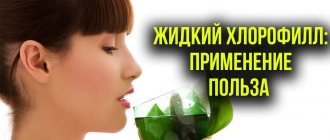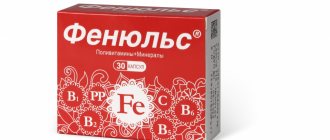Usage: Dill seeds and essential oil are used in medical practice. Dill fruits are harvested in the fall, when the plant and seeds turn brown.
Related article Herbs against headaches: three recipes based on St. John's wort and dill The seeds are dried and stored in a cool, dry place.
Beneficial properties: the fruits and essential oil of dill relieve spasms, lower blood pressure, have an expectorant, carminative, sedative, wound-healing, diuretic and antihemorrhoidal effect.
The fruits are used to improve appetite and for insomnia.
Dill is useful for obesity, diabetes, salt deposition, for stimulating milk secretion in nursing women, for allergic skin itching and pustular diseases of the facial skin.
Contraindications: dill preparations are contraindicated during pregnancy.
Recipe
1 tbsp. l. herbs or seeds, brew 1.5 cups of boiling water, leave for an hour and take 1-2 tbsp. l. 4-5 times a day to lower blood pressure.
Benefits and indications for taking dill seed decoction
Externally, dill fruits are small light or dark brown seeds formed on the umbels of the plant in the final stage of flowering. They are rich in riboflavin, thiamine, carotene, essential oils and other substances. Among the vitamins and minerals, it is worth noting a large number of acids - ascorbic, nicotinic, linoleic and others. As well as vitamins A, B and PP. Hence the useful properties:
- Removal of waste products - urine, bile, sweat. A decoction of dill seeds for newborns helps relieve abdominal cramps and remove gases from the intestines. Important! Nursing mothers will be able to combine the feeding process with adding a decoction of dill seeds to their diet, only after first determining the child’s tolerance to dill.
- Normalization of heart contractions. Pressure decreases under the influence of substances from the decoction.
- Improving gastrointestinal motility and intestinal peristalsis. Taking the decoction increases the secretion of the digestive glands and normalizes metabolic processes.
- Patients with poor appetite are advised to take a decoction.
We must not forget about contraindications. They are based on individual intolerance to the components and existing hypotension (low blood pressure).
Can it be harmful to health and are there any side effects?
To start treatment with dill seeds, you need to clearly know what and how to treat. For this, advice from a neighbor or good friend is not enough. In any case, recommendations for treatment must come from doctors , otherwise you can harm your own health. The medicine has a limited shelf life - no more than one day. Based on this, you should not prepare decoctions and infusions for future use.
Who is it contraindicated for?
People who have the following contraindications should not resort to this treatment:
- low blood pressure (how exactly do seeds affect blood pressure?);
- kidney and gallstones;
- cystitis;
- pregnant women;
- in case of individual intolerance.
Restrictions
The opposite effect in treatment can be achieved if you do not follow the norms for taking the folk remedy. In some cases, with excessive consumption, allergic reactions were observed.
The fact that a small dill seed contains miraculous powers was known back in ancient times. Ancient manuscripts have brought to us many healing recipes. This method of treatment is still popular today. But they only help those who take good care of their body and follow the advice of their doctor.
Infusion
Contrary to popular belief that all the miraculous qualities of dill seeds are revealed under the influence of boiling water, it should be said that the maximum temperature can change the strength of vitamins and minerals. Therefore, to prepare the infusion, just hot water is enough - 1 glass / 10 g. The container with the medicine is wrapped in a towel and left to “ripen” for 2 hours. The ready-made infusion will help in the following cases:
- Gastrointestinal problems - colic, flatulence. ½ glass, three times a day.
- Treatment of colds - cough, sore throat. The dose is similar.
- Angina and arrhythmia. The dose is similar.
- Diseases of the biliary and urinary system. 100 ml/up to 5 times a day.
- Increased lactation is achieved by taking 20 ml of infusion half an hour before feeding.
How to distinguish dill from fennel
Dill is sometimes confused with fennel, which is called dill. These are two genera of plants of the same family.
| Distinctive feature | Dill | Fennel |
| stem | 40-150 cm high, the central stem is hollow inside, bare at the bottom, with separate leaves | height up to 2 m, strongly branched in the lower part |
| Lifespan | annual plant | biennial plant |
| Seeds | Small, flat | Reach 10 mm in length |
| Taste | specific | Sweet, with a slight bitterness |
| Smell | Fragrant, fresh | Similar to anise, with a slight bitterness |
| Root | Small, very hard | Fleshy, spindle-shaped |
Decoction
Brewing dill as tea is wrong. To obtain the product, it is recommended to place a mixture of 1 glass of water and 10 grams of seed in a water bath and boil it for no more than 10 minutes. After cooling and straining, the product is ready for use.
- To relieve sore throat, barking cough and other bronchial problems. To enhance the effect, it is recommended to add St. John's wort herb to the decoction being prepared.
- Fennel added to the decoction after removing the container from the heat gives a sedative effect.
- For problems with the urinary system, for example, cystitis, the decoction of dill seeds should be more concentrated - the amount of dry component is doubled.
- Headaches, including migraines, are eliminated with a decoction of dill seeds in milk.
- The dose of use is almost the same for all cases - half a glass / 2-3 times a day until complete recovery.
Procurement of raw materials
Harvesting the fruits of fragrant dill for medicinal purposes occurs when the seeds of the plant are 50% ripe - in mid-summer (beginning or mid-July). A sign of plant readiness are the browned fruits of the umbrellas. The inflorescences are cut and dried in bunches, after being wrapped in cotton cloth. This way you can protect your umbrellas from falling off. After the inflorescences are completely dry, they must be threshed and then scattered into glass containers. Additionally, crushed dill fruits can be placed in a dryer and kept at a temperature of 30-40℃ until the required condition.
As a result
Effective medications very often turn out to be a familiar herb that has fewer side effects compared to tablets and injections. They are also good for preventing existing diseases. It is recommended to consult with your doctor before use.
This article is for informational purposes only, please consult your doctor for details!
AUTHENTICITY
External signs . Whole raw materials. Individual semi-fruits (mericarps), less often whole fruits (mericarps) 3–7 mm long, 1.5–4 mm wide, oval, slightly convex on the outside and flat on the inside; each semi-fruit has 3 filiform dorsal ribs and 2 flat wing-shaped lateral ribs.
When examined under a magnifying glass (10×) or a stereomicroscope (16×), the following are visible: whole bare oval semi-carps (mericarps) light brown, brownish-gray or brown, sometimes with a green tint; on the outside – slightly convex, with three noticeable thread-like dorsal ribs of a lighter color, between which there are 4 secretory essential oil tubules; on the inside - flat, with 2 convex semilunar essential oil tubules, which can be partially destroyed; along the edges of the semi-fruit - brownish-white, sometimes with a green tint, marginal ribs - wings; At the apex of the mericarp, the remains of a five-toothed calyx are visible.
The color of the semi-fruits is light brown, brownish-gray or brown, sometimes with a green tint, with lighter dorsal ribs and brownish-white, sometimes with a green tint, marginal ribs. The smell is strong, aromatic. The taste of the water extract is sweetish-spicy, somewhat pungent.
Powder. A mixture of pieces of fruit of various shapes passing through a sieve with 2 mm holes.
When examined under a magnifying glass (10×) or a stereomicroscope (16×), bare, oval mericarps are visible, usually without marginal pterygoid ribs, less often with their remains or entire mericarps; on the dorsal side - slightly convex, with 3 noticeable thread-like dorsal ribs of a lighter color, between which there are 4 secretory essential oil tubules; on the commissural (abdominal) side - flat, with 2 partially destroyed semilunar essential oil tubules; at the apex of the mericarp there are rarely remains of a five-toothed calyx; individual brownish-white marginal ribs, semi-lunar in shape.
The color of the powder is light brown, grayish-brown or brown, sometimes with a green tint, with brownish-white and beige inclusions. The smell is strong and aromatic. The taste of the water extract is sweetish-spicy, somewhat pungent.
Microscopic signs. Whole raw materials. A cross section of the mericarp shows tangentially elongated epidermal cells (exocarp) with thick walls; mesocarp, consisting of parenchyma cells with thin or slightly thickened walls; vascular bundles with groups of mechanical fibers are visible in the ribs; essential oil tubules are located in the hollows: 4 - on the dorsal (convex) side and 2 - on the ventral (flat) side, tubules of various sizes with brown excretory cells; the endocarp, tightly fused with the seed coat, is noticeable as a dark stripe; semicircular seed; the endosperm of the seed, consisting of polygonal thick-walled cells filled with aleurone grains, droplets of fatty oil and small drusen of calcium oxalate.
When examining a crushed preparation of the fruit under a microscope, fragments of the epidermis (exocarp) are visible from polygonal thin-walled cells with moderately pronounced clear thickening of the walls, with stomata of the anomocytic type, the stomata are small and rare; fragments of mesocarp from cells with thin, slightly thickened walls; fragments of essential oil tubules of various sizes with brown excretory cells; fragments of conductive bundles with groups of mechanical fibers; fragments of endocarp from very narrow transverse cells; seed fragments including thin-walled brownish seed coat cells and groups of polygonal thick-walled endosperm cells filled with aleurone grains, droplets of fatty oil and small drusen of calcium oxalate; whole embryo or its fragments.
Powder. When examining a crushed preparation of the fruit under a microscope, fragments of the epidermis (exocarp) are visible from polygonal thin-walled cells with moderately pronounced clear thickening of the walls, with a stomatal complex of anomocytic type; stomata are small and rare; fragments of mesocarp from cells with thin, slightly thickened walls; fragments of septate (with transverse partitions) essential oil tubules of various sizes with brown excretory cells; fragments of conductive bundles with groups of mechanical fibers; fragments of endocarp from very narrow transverse cells; seed fragments including thin-walled brownish seed coat cells and groups of polygonal thick-walled endosperm cells filled with aleurone grains, droplets of fatty oil and small drusen of calcium oxalate; whole embryo or its fragments.
Figure - Fragrant dill fruit. 1 – cross section of semi-fruit: a – essential oil tubules,
b – vascular bundles in the ribs, c – seed endosperm (40×);
2 – epidermal cells (exocarp) (200×); 3 – mesocarp parenchyma (200×); 4 – fragment of a septate (with transverse partitions) essential oil tubule: a – brown excretory cells,
b – transverse partitions (200×); 5 – endocarp (200×);
6 – endosperm cells with small drusen of calcium oxalate and drops of fatty oil (200×)
Contraindications to the use of dill
The use of dill seeds is contraindicated for those with low blood pressure, as it can lower it even further and aggravate the condition.
Women during pregnancy should use dill with caution. On the one hand, they are good for stimulating lactation, excellent for edema that often plagues pregnant women, and also help fight insomnia. In addition, it is a very effective remedy for constipation, which bothers pregnant women even if they eat properly. However, before including this type of medication in your diet, you should always consult your doctor.
More fresh and relevant information about health on our Telegram channel. Subscribe: https://t.me/foodandhealthru
We will be grateful if you use the buttons:
Chemical composition of dill
The herb and fruits of dill contain: essential oil (a mixture of terpenes), flavonoids, fenchone, anetyl, carotene, ascorbic acid. Dill fruits contain: up to 5% essential oil, fenchone, anethole, flavonoids, vicenin, xanthon dillanoside, coumarins, furanochromones, visnagin, visnadin, kellin, pyranocoumarin, bergapten, umbeliprenin, scopoletin, esculetin, umbelliferone, organic acids (caffeic, ferulic, chlorogenic), up to 20% fatty oil (petrozelic (25.35%), oleic (65.46%), palmitic (3.05%), linoleic (6.13%) acids), up to 15% proteins; concentrate selenium and silver. Essential oil of dill fruits is a light yellow liquid with a specific, pleasant, very delicate odor, reminiscent of caraway, the main component of which is d-alpha-carvone ketone (30-60%), in addition it contains dillapiol (up to 30%), d-alpha-limonene, alpha-phellandrene, 0.2 to 2% alpha-pinene, dipentene, dihydrocarvone, myristicin, beta-myrcene, terpinolene. Dill leaves contain: up to 2% essential oil, up to 135 mg% ascorbic acid, nicotinic acid, carotene up to 6.5 mg%, thiamine, riboflavin, folic acid, flavonoids (rutin, quercetin, isorhamnetin, kaempferol), carbohydrates, pectin substances, mineral salts (iron, potassium, calcium, phosphorus). Essential oil of dill herb is a slightly greenish liquid with the smell of dill, the main component of which is d-alpha-phellandrene, carvone content is up to 16%, as well as limonene, dillapiol, myristicin, alpha-pinene, camphene, n-octyl alcohol, terpinene , dipentene, proazulene.
TESTS
Humidity. Whole raw materials, powder - no more than 12%.
Common ash. Whole raw materials, powder – no more than 10%.
Ash, insoluble in hydrochloric acid. Whole raw materials, powder – no more than 1%.
Grinding of raw materials. Powder: particles that do not pass through a sieve with holes measuring 2 mm - no more than 5%; particles passing through a sieve with holes measuring 0.18 mm - no more than 5%.
Foreign matter
Other parts of the plant. Whole raw materials - no more than 1%.
Organic impurity. Whole raw materials – no more than 2%.
Mineral impurity. Whole raw materials, powder - no more than 1%.
Heavy metals . In accordance with the requirements of the General Pharmacopoeia Monograph “Determination of the content of heavy metals and arsenic in medicinal plant materials and medicinal herbal preparations.”
Radionuclides. In accordance with the requirements of the General Pharmacopoeia Monograph “Determination of radionuclide content in medicinal plant materials and medicinal herbal preparations.”
Pesticide residues . In accordance with the requirements of the General Pharmacopoeia Monograph “Determination of the content of residual pesticides in medicinal plant materials and medicinal herbal preparations.”
Microbiological purity. In accordance with the requirements of the General Pharmacopoeia Monograph “Microbiological purity”.
Quantitation. Whole raw materials: essential oil - at least 2%; powder: essential oil - not less than 1%.
The determination of essential oil is carried out in accordance with the requirements of the General Pharmacopoeia Monograph “Determination of essential oil content in medicinal plant raw materials and medicinal herbal preparations” (method 2, distillation time - 2.5 hours).
About 10.0 g (exactly weighed) of uncrushed fruits are crushed in a mortar with the addition of 3.0 g of quartz sand or broken glass, previously sifted from dust through a sieve with holes measuring 0.25 mm, for no more than 2 minutes or crushed in a laboratory mill until there are no whole fruits, grinding time - no more than 2 minutes.
Packaging, labeling and transportation . In accordance with the requirements of the General Pharmacopoeia Monograph “Packaging, labeling and transportation of medicinal herbal raw materials and medicinal herbal preparations.”
Storage. In accordance with the requirements of the General Pharmacopoeia Monograph “Storage of medicinal plant raw materials and medicinal herbal preparations”.
Download in PDF FS.2.5.0043.15 Dill fruits
Dill: harmful to the body
Although dill has great benefits, its uncontrolled use is strictly prohibited. Dill, the benefits of which are colossal, can turn out to be harmful if you indulge in self-medication too much. In many ways, the consequences will be determined by the amount of use and form.
If you have low blood pressure, eating too much greenery can make you faint, as it already lowers your blood pressure. Some people cannot tolerate certain components of the plant, so you need to be careful.
If this spice is new to your diet, then it is better to start consuming it in small portions and at the initial signs of an allergy, you should avoid greens.
Dried
Let's consider what happens when the grass is dried, whether useful substances remain, how many kcal will be per 100 g of product. Drying greens also preserves the chemical composition of the spice, but only if it was carried out according to the rules and without strong heating. The beneficial substances and aroma of dried dill are preserved, but the calorie content of the greens increases due to the evaporation of water - it is 78 kcal per 100 grams of culture.
Dill is truly a miracle cure. It is widely used in cosmetology, aromatherapy and medicine. The plant is an excellent diuretic, as well as an assistant in the fight against excess weight, cystitis, kidney and pancreas diseases. Dill can be used by both men and women, as well as small children.
Description
Scented dill
Scented dill. An annual herbaceous plant of the Umbellaceae family, 40–120 cm high.
The root is spindle-shaped, few-branched, thin.
The stem is single, erect, cylindrical, with alternating whitish and greenish stripes and a bluish coating. It is branched in the upper part and curved between the branches.
The leaves are three or four times pinnately dissected into filiform ovoid lobes. The lower leaves are petiolate, the upper ones are sessile.
Inflorescences are umbels with 30 - 50 smooth rays. The flowers are small, yellow.
The fruit is broadly elliptical, slightly convex, compressed from the back. When ripe, it splits into two semi-fruits with 5 oblong ribs, has an aromatic odor and a spicy-bitter taste.
Blooms in July - August. Ripens in August - mid-September.
Spreading
Fragrant dill grows wild in North Africa, Asia Minor, Iran, and India. It grows and grows wild in Central and Atlantic Europe, the Balkans, almost the entire European part of Russia, Western and Eastern Siberia, the Caucasus and the Far East. in Central Asia, North America, etc.
It has been known in culture for a long time as one of the best aromatic herbs. Mentioned in the books of all ancient peoples. Cultivated by the Greeks and Romans. In European countries in culture since the 10th century.
In the wild it is found near housing, along the outskirts of fields and roads.
Boiled
Heat treatment changes both the structural and mechanical properties of greens and the chemical composition. The cell walls of plants consist of substances that are not digested in the human stomach - these are fiber and pectin substances.
When cooked, tissues and cell walls are destroyed, lose elasticity, the connection between cells is disrupted - the culture becomes soft and loose.
During heat treatment, polysaccharides and structural proteins are partially dissolved, and protopectin is broken down. The concentration of vitamins is reduced by 23-60% - depending on the cooking time and degree of heating.
For example, the hydroxyproline content in raw dill is 20.3 mg per 100 g, and in boiled dill only 12.3 mg .
Boiled dill is not as healthy as fresh dill, but it is digested and absorbed better. And the calorie content of greens is reduced due to swelling with water.








